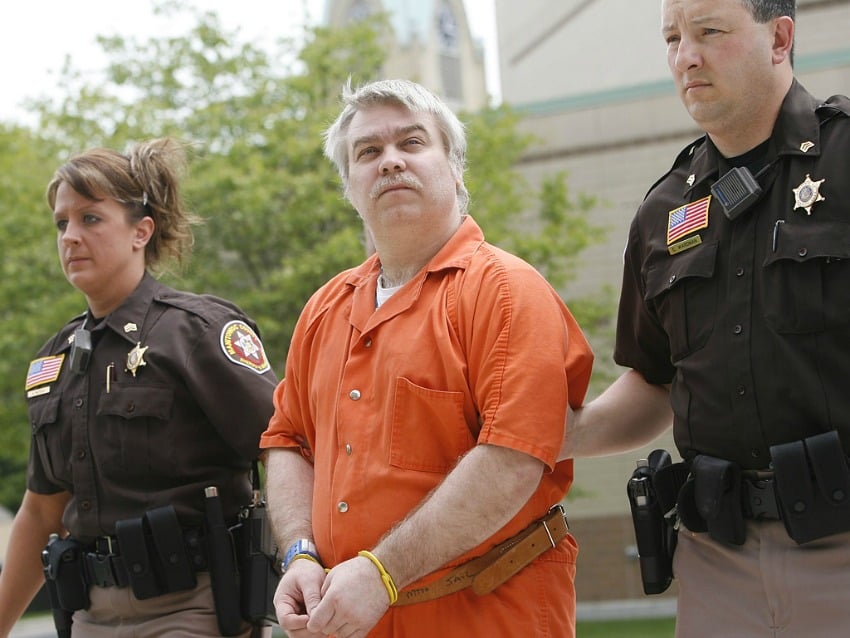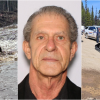Everyone who’s anyone is talking about or at least has heard of the new Netflix series Making a Murderer, and now a UBC Okanagan professor is giving his take on the program.
UBC Okanagan’s May Li recently sat down with Stephen Porter, UBC Professor of Psychology to discuss the 10-part series which portrays the case of Steven Avery and his then teenage nephew Brendan Dassey. If you haven’t watched the series stop reading as the interview contains spoilers.
An online petition has collected hundreds of thousands of digital signatures seeking a pardon for the pair, which have been convicted of murder.

Li spoke with Porter and graduate student Katherine Rose in the Irving K. Barber School of Arts and Sciences for some context on how the show’s tale fits into the many problems that can arise in criminal investigations. Porter is also Director of the Centre for the Advancement of Psychological Science and Law (CAPSL), and studies psychology and law, legal decision-making, forensic aspects of memory, deception detection and criminal behavior.
Q: So what’s the big deal? What is the show about?
A: Avery made national headlines in 2003 when he was released after serving 18 years for a sexual assault he never committed. A mere two years later, Avery and his then 16-year-old nephew Dassey were charged with killing Teresa Halbach, who visited the Avery family salvage yard on the day of her disappearance. Following an investigation and lengthy trial, both were convicted and sentenced to life terms, but only Dassey is eligible for parole – in 2048.
The show follows the course of Avery’s early life and wrongful conviction, and the events preceding and ensuing his murder trial. It showcases the individuals behind the story, including Avery’s family, Halbach’s family, the feuding legal teams, and jury members themselves. Audiences are not only privy to the emotional turmoil – frustration, anger, grief – of the families but also see the inner workings of the criminal justice system in all its raw, detailed glory. Making a Murderer depicts what happens behind closed doors in contrast to what we see on the evening national news.
Q: How do you feel about the fact that people are so entertained by this true-crime story, similar to the Serial podcast?
A: One of the pillars of our society is a criminal justice system that makes fair and accurate decisions concerning guilt and innocence. In a sense (not to get too Freudian), the police and courts represent the ultimate parental figures in that their role is to protect us but also oversee and control our behaviour. As such, we must trust that this system and the players within it work with fairness, competence, virtue, and integrity.
Yet we simultaneously resent and question their Big Brother power over us (pause to think about how you really feel toward the police). When the assumption of law enforcement’s honour is challenged, as it has by numerous recent incidents involving the police in Canada (such as the Robert Dziekański Taser incident) and courts (numerous wrongful conviction cases), the pillar trembles and suddenly we pay close attention.
A show like Making a Murderer – whether you believe Avery is guilty or not – that depicts what appears to be a foolishly inept or astonishingly corrupt cast of characters in the legal system makes each one of us feel an ultimate betrayal by those we have been taught to trust. Further, watching the show likely provokes each viewer to think, “Wow, this could happen to me.” It renders us fascinated and outraged all at once.
In addition, the documentary is unique in that there is no narrator describing or interpreting what occurred; the evidence is laid out and our minds are gripped as we must deduce what really happened for ourselves. Many components of the Avery case have been studied in the field of forensic psychology and seem to be of inherent interest to most people: faulty eyewitness testimony, problematic interrogation techniques, a probable false confession, deception, and questionable jury decision-making.
When you throw in probably one of the most questionable prosecutors of the century with a captivating murder mystery, suddenly you have the viral sensation that is Making a Murderer. We hope that this show, and others like it, will have an impact beyond mere entertainment value, and will be educational on the topics associated with psychology and law. At the end of the day we want to see improvements in the legal system as a result.

Q: Why do authorities say the show is biased?
A: Firstly, we think it comes down to self-preservation and the way in which the evidence is or is not presented in the show. The criminal justice system is determined to maintain the appearance of eminence, integrity, and not coming into “disrepute” in the minds of the public. To create this aura, judges preside over the courtroom like divine beings in flowing gowns on a raised stage brandishing a gavel.
Authorities in the system are threatened by a story such as Making a Murderer; they are personally threatened, perhaps even offended, but are also endangered and must fight to restore our faith in their system, which has been undermined of late. There is also a deep, more primitive, fear of a Lord of the Flies-like spiral into chaos and anarchism if the criminal justice system pillar were to weaken.
Secondly, the authorities and right-wing journalists like Nancy Grace opine that the evidence in the documentary spanning a decade is selectively presented in line with the producers’ supposed sympathy with Avery (and Dassey). They point out that the audience is only privy to particular elements of the interrogation and courtroom footage, while the producers omitted key evidence that contributed to the guilty verdicts of both men.
Even the title indicates a conspiracy and perhaps the producers’ bias before the audience actually witnesses and decides upon the pivotal points of the documentary. For many, the suggestion that a suspect is in fact a victim is a hard pill to swallow. Further, many of the possibilities that are raised in the show, such as that an innocent person could confess to a violent crime, are simply denied by many observers despite that they have been scientifically validated, including in our own research lab.

Q: What about that online petition? Could something like that work?
A: It depends on what the goals of the online petition are. Could it result in a pardon by the President of the United States? No. The President does not have the authority to pardon people or overturn convictions in state crimes. Exonerating a convicted person - which only rarely occurs - can only happen through the proper legal avenues and sadly, that can be a long, tedious process.
The reality of a criminal case remains quite different than what is often presented to the public; a petition will fall last on the list of evidence presented in a court of law. With that being said, if the goal of the petition was to raise awareness of the major problems in the investigation and holes in the evidence then yes, it has certainly been successful on that front.
Public sympathy with Avery and Dassey is at an all-time high; the petition has received more than 449,000 signatures online and that number continues to grow daily. It has obviously been fruitful in rallying public opinion. Unofficially, it may increase the likelihood of appeal as employees of the system, including judges, will be aware of the show and the public’s strong opinion of the case.
Support for freeing Avery also will likely lead to the amassing of funds and the legal dream team to represent the two men. If you recall, lack of financial resources was highlighted as a barrier to Avery (and Dassey) obtaining skilled legal representation throughout the duration of this ongoing case.

Q: Having studied criminal behavior, mental health in the criminal justice system, and deception detection, unlike many of us watching this on Netflix, do you feel like the show presents the case fairly?
A: That’s a difficult question because like everyone else, we only see what the producers want us to see. Watching the show through the lens of researchers in the area of psychology and law certainly allowed for a unique perceptive however. The documentary highlights many of the problems that can arise in criminal investigations, and specifically issues that have been extensively studied in our field and also in the CAPSL (such as eyewitness memory, tunnel vision, police interrogation tactics, false confessions, deception detection, remorse).
It is apparent that Making a Murderer presents aspects of criminal cases that the public rarely is privy to, but it is difficult to say whether or not it presents the case itself in a fair light. However, based solely on the egregious (laughable, if not for the outcome) aspects of the investigation that are presented in the show, our opinion is that neither Avery nor Dassey should ever have been found guilty beyond a reasonable doubt in a court of law, regardless of their actual guilt.
Recently Avery filed yet another appeal as he maintains his innocence in the death of Halbach. Avery is serving a life sentence for the murder and has had previous appeals denied.
















